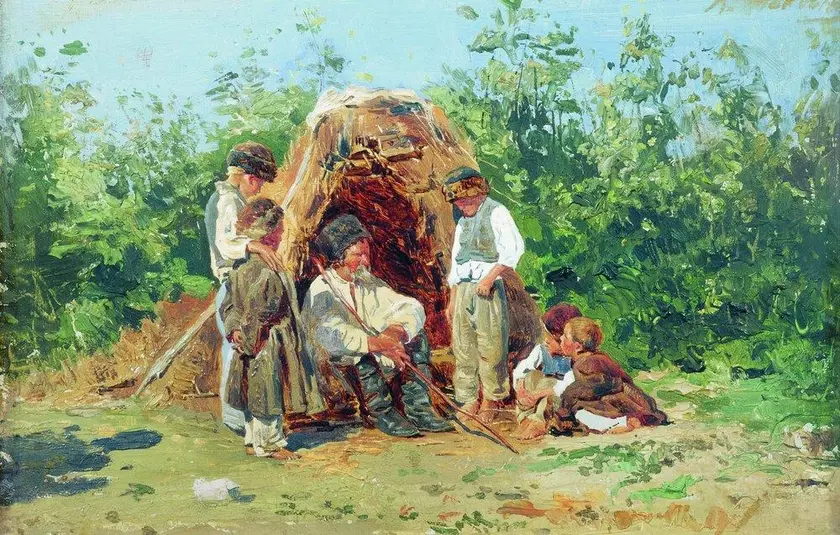Stories and reference frames
 Grandfather stories, Konstantin Makovsky, 1881
Grandfather stories, Konstantin Makovsky, 1881
Stories are important. They are the primary medium through which we communicate. But why is that the case? What is it about stories that makes them so fundamental?
Stories are used to share experiences and perspectives. They allow us to understand what other people have been through. However, this doesn't fully encapsulate their utility. We also create fictional stories, which can be even more impactful than lived stories because they can be archetypal. The utility of fictional stories can't be explained by a desire to shared lived experiences. There's something deeper than that going on. To understand it, we first need to understand reference frames.
A reference frame in this context is a way of looking at the world 1 and understanding it. For example, you might have a reference frame for food that focuses on calories. Or you could have a reference frame that defines the taste of your food as the most important factor. Suppose I have both the food as calories and food for taste frames in my head. How I choose to weight those two frames determines whether I eat chips or salad for dinner.
There are an infinite number of reference frames 2, and they are all in some sense valid. There isn't one frame that is correct or 'better' than other frames. They are merely different, and we can choose whichever frame will help us to achieve our goals.
This means we all have many different reference frames, and we also have many reference frames in common with others. The set of shared reference frames form our culture. This explains how we can be aligned with the millions of people in our country, while still having a multitude of individual differences. We have reference frames that we share with everyone in our culture, a different set that we share in smaller groups like our families, and a set of frames that are unique to individuals.
How do stories link to reference frames? Stories are a way of sharing reference frames. We need to have a set of shared reference frames to form a culture and enable us to live together. Stories are the means through which we copy that set of frames. Lived experience is an initially unique set of reference frames that we are able to share with others through stories. Fictional stories are a way to share reference frames we haven't ourselves gained through lived experience, but through our thoughts. They also allow us to more easily identify the archetypal reference frame and the meaning of a story. 3
By the use of 'world' I am not suggesting it is restricted to the physical realm that we live in
There are an infinite number of reference frames because there are an infinite number of facts or statements which could be arranged in different weights within a frame
Reference frames are also used in the cortical columns in the brain to learn a model of the world. There is a fractal nature to this idea that is appealing. For more information on how they are used within the brain, I recommend the book 'A thousand brains: A new theory of intelligence' by Jeff Hawkins.